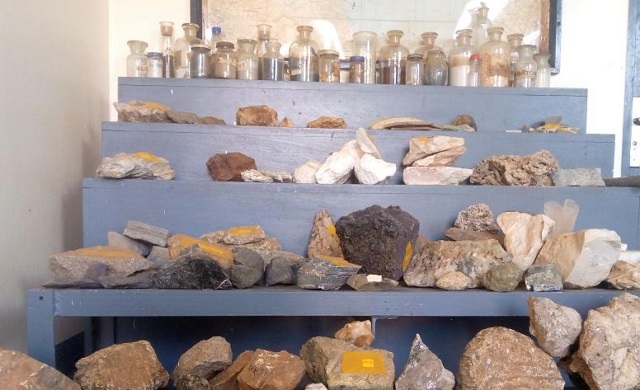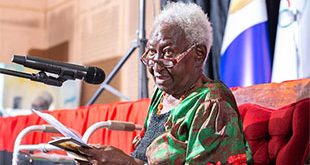
Kampala, Uganda | THE INDEPENDENT | The Directorate of Geological Survey and Mines is struggling to replace mineral sample collections plundered from its museum by insurgents in the early 1980s. In the 1980s, the facility shelved over 35 mineral samples that included iron ore, copper, uranium, gold, and different rock samples collected from different parts of Uganda. These were meant to provide vital data on mineral exploration and development to attract investment in the country.
The looting happened during the revolutionary struggle between the then National Resistance Army-NRA led by Yoweri Kaguta Museveni and the Uganda National Liberation Army-UNLA soldiers under the Milton Obote and later Tito Okello regime.
Richard Kigwe, a geologist at the facility explained to URN that for the last three decades, the lost glory of the museum has not yet been fully restored to the required level because vital samples were either robbed or tampered with.
Kigwe says while the facility located along Johnson road in Entebbe municipality has over the years been renovated, the experts at the facility continue to gradually recollect new samples for laboratory analysis, especially whenever they have facilitation.
Molly Kibalama Bakke Male, another geologist says that the museum still lacks crucial information on rock samples whose labels were vandalized, adding that they find it difficult to explain to investors who regularly visit the museum to obtain evidence for investment decisions.
Vincent Kedi, the acting director of mines notes that the facility has since failed to get the anticipated facelift coupled with understaffing. There are only seven mines inspectors who are overstretched to conduct surveys for the entire country amid funding shortfalls.
During her ministerial visit to the facility early this month, Ruth Nankabirwa, the Minister of Energy and Mineral Development tasked the officials to ensure visibility by writing more proposals tailored at attracting funders and creating visibility.
Formerly the Department of Geological Surveys and Mines, the establishment came into existence in 1918 during the colonial era. It was later transformed into a full Directorate in 1920 under the Ministry of Energy and Mineral Development to deal with the Geology, Geothermal resources, and Mines Development activities.
The principal achievements of the Directorate include the recognition and description of the main rock groups of the protectorate, the discovery of the mineralized areas of Buganda, Ankole, Bunyoro, Karamoja, Northern Uganda, and the Rwenzori areas among others.
The Directorate provides other services that include data dissemination to attract investment in the country’s mineral sector, licensing and inspection, mineral exploration and development, geothermal resource development, laboratory services, geophysics, and seismic facilities.
*****
URN
 The Independent Uganda: You get the Truth we Pay the Price
The Independent Uganda: You get the Truth we Pay the Price



